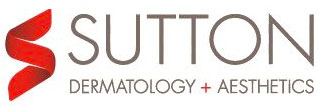Kait Matthes, PA-C
On a daily basis I encounter patients who, despite increasing awareness on the dangers of indoor tanning, continue to make that a regular part of their weekly (or even daily) activities. Did you know that those who tan indoors are 74% more likely to get melanoma than those who have never tanned? Additionally, the more one spends in a tanning bed the higher their risk becomes. These statistics are alarming and working in a dermatology office has given me the opportunity to spread the word that indeed, The Bed Is Dead.
Just a couple excuses that we hear commonly are “I just needed to get a little color before I went to Mexico” or even “I only do it for the vitamin D.” I get it. I, too, am a recovering tanning addict. At a young age, the benefits seem to outweigh the negative health consequences and I was no different than the average teenage girl today. So I want to share just a few small pieces of information with you that I wish I would have known before I sought out that bronze on a daily basis.
1. Indoor tanning has been proven to cause different types of skin cancers, including melanoma, squamous cell carcinomas and basal cell carcinomas. It is always our goal to catch these early, but we have many patients that end up having a surgery that leaves their face (or other body parts) disfigured with large scars. Occasionally these cancers can become invasive which means they can spread, therefore requiring more extensive surgical, chemotherapy or radiation measures.
2. And if a dramatically increased risk of skin cancer isn’t enough, tanning causes permanent structural damage to the skin – including wrinkling, age (brown) spots and loss of elasticity (sagging skin). You will be that much more confident at your 20 year class reunion if you learn proper sun protection (and avoidance of tanning beds) early.
3. Your skin remembers EVERY tanning session. Just one session before the age of 35 increases your risk of melanoma by 59%. But it is never too late to quit!
4. A base tan does not protect skin from damage. A tan means that your skin is damaged and therefore more likely to burn.
5. There is no denying that vitamin D is important. However, just a few minutes of natural midday sun is enough for a fair skinned person to max out their vitamin D production (less than it takes to even get pink).
At Sutton Ryan Dermatology we highly recommend annual skin exams, especially if you have a family history of skin cancer or indoor tanning. We would love to visit with you about the changes you can make now to protect yourself in the future. From one recovered tanning addict to another, you won’t regret it.
**All statistics herein are courtesy of websites such as skincancer.org, www.cdc.gov, and aad.org. For more information, visit www.thebedisdead.org.



